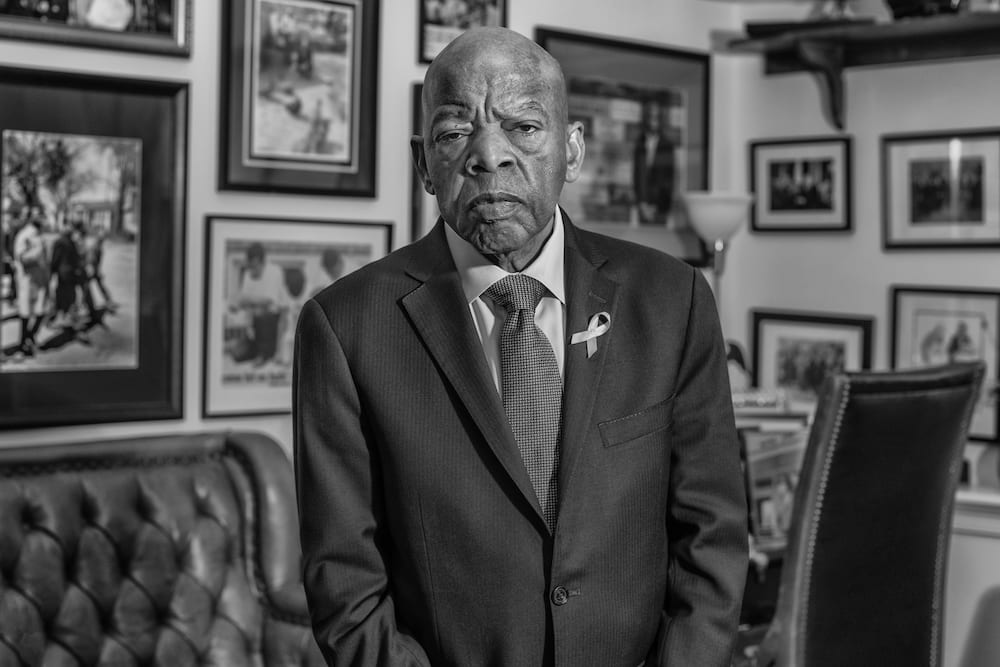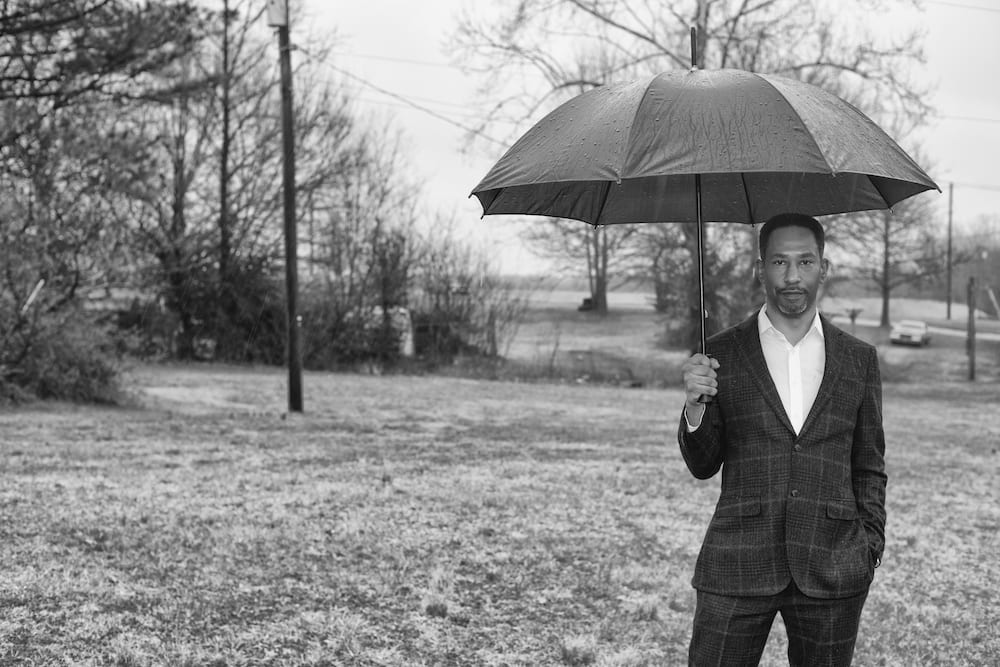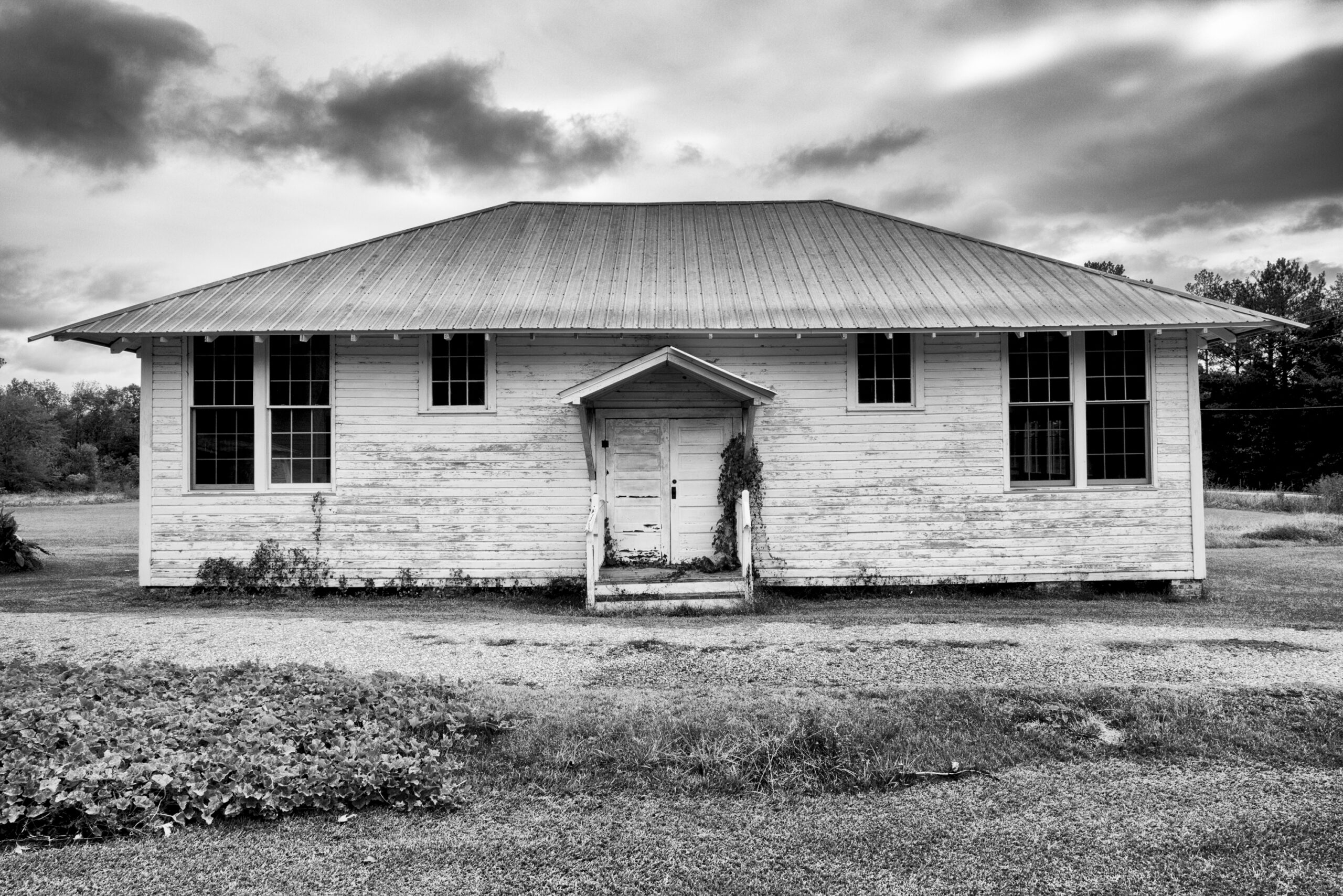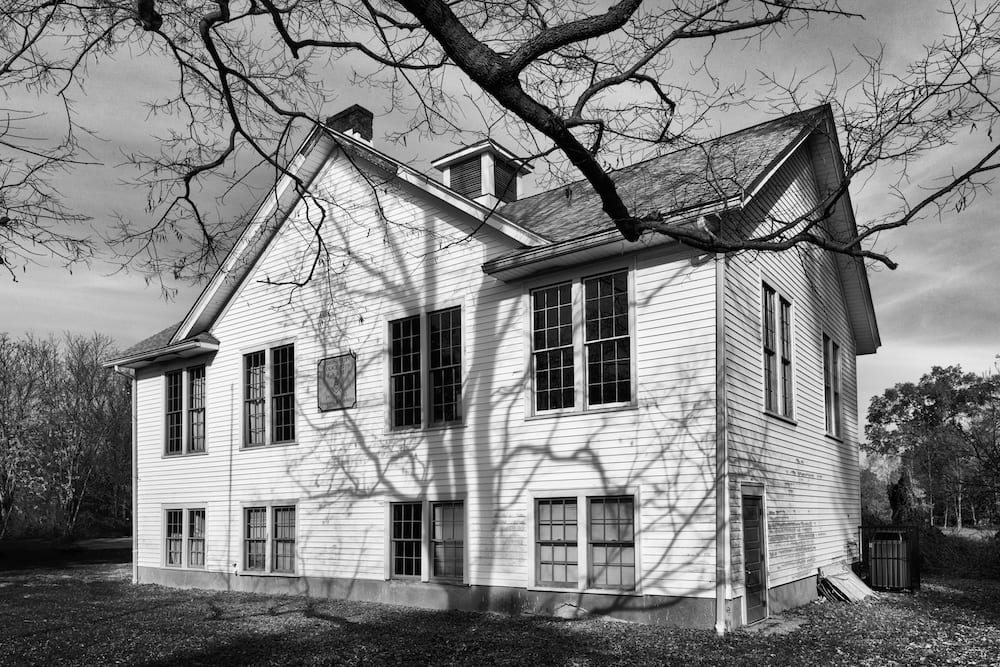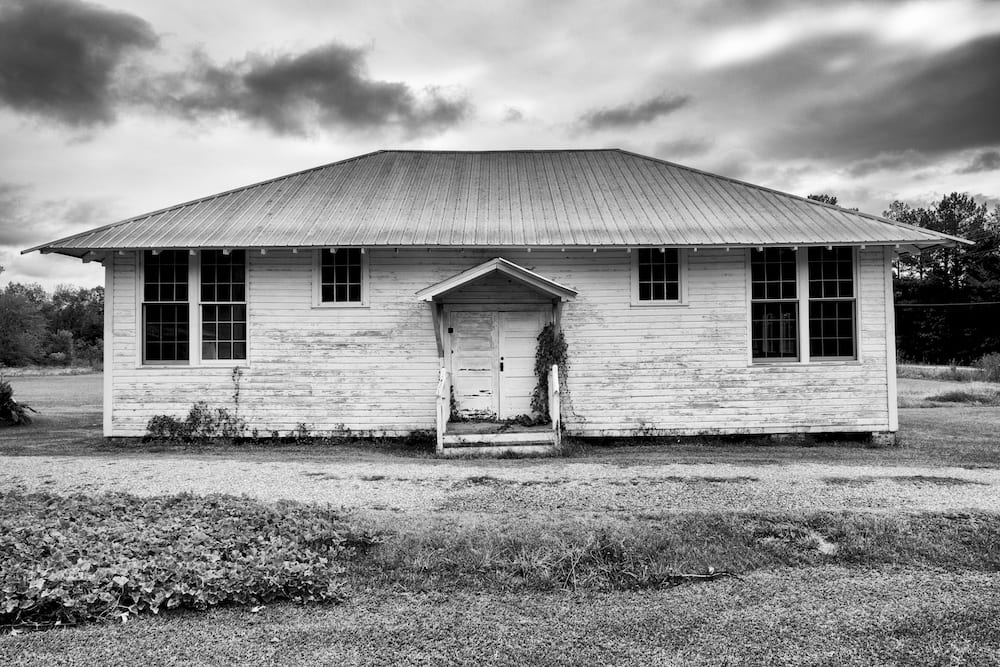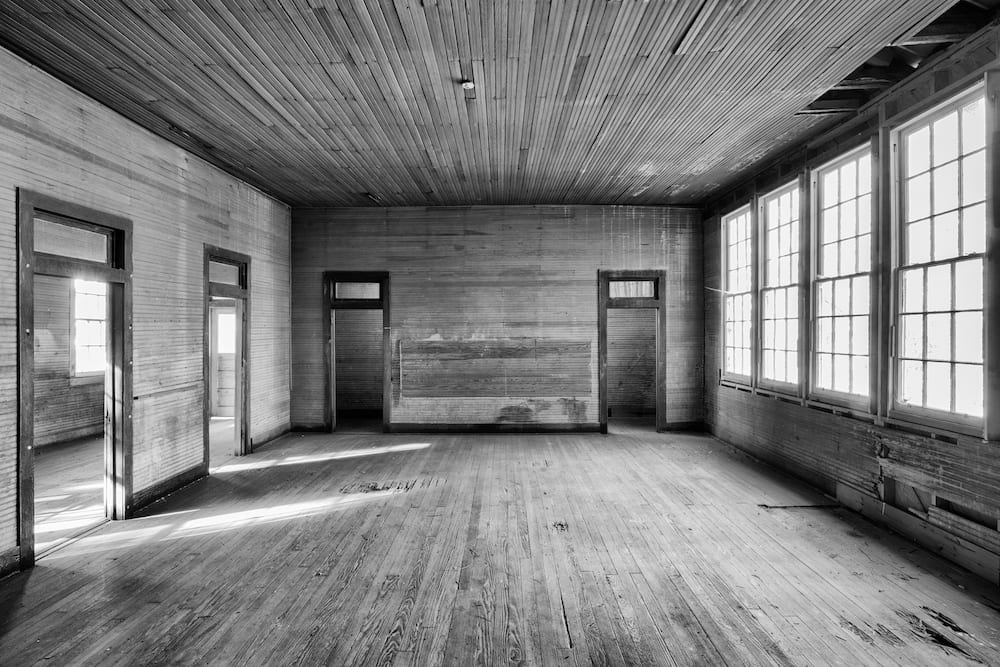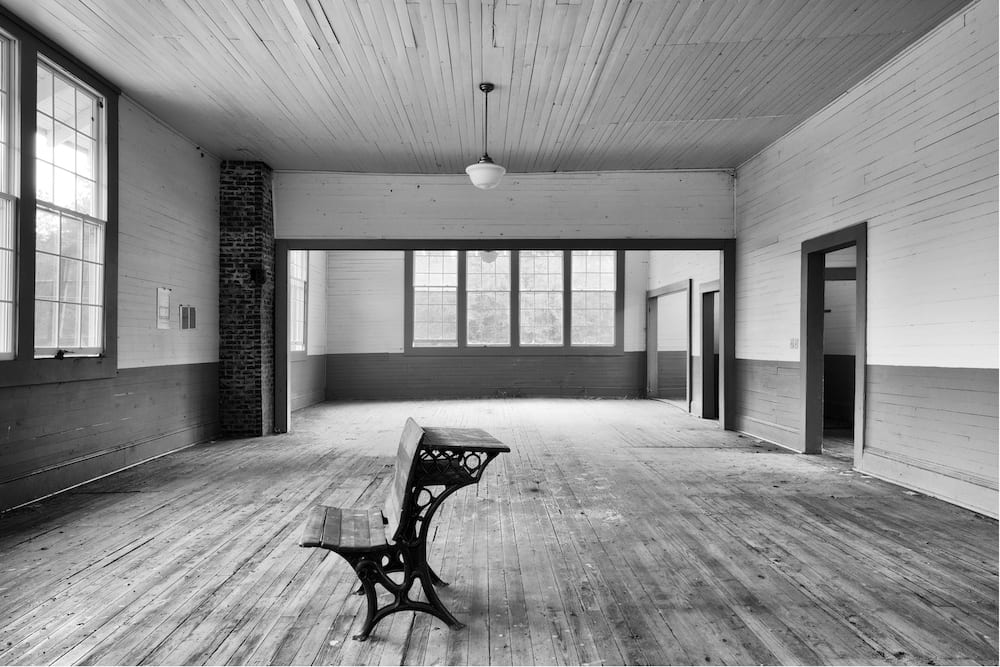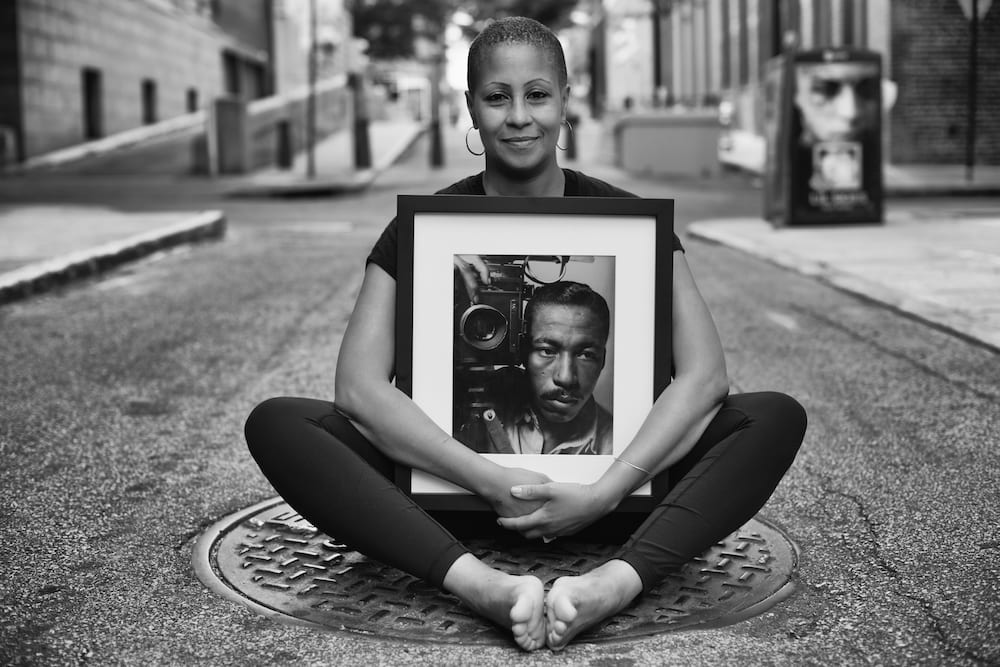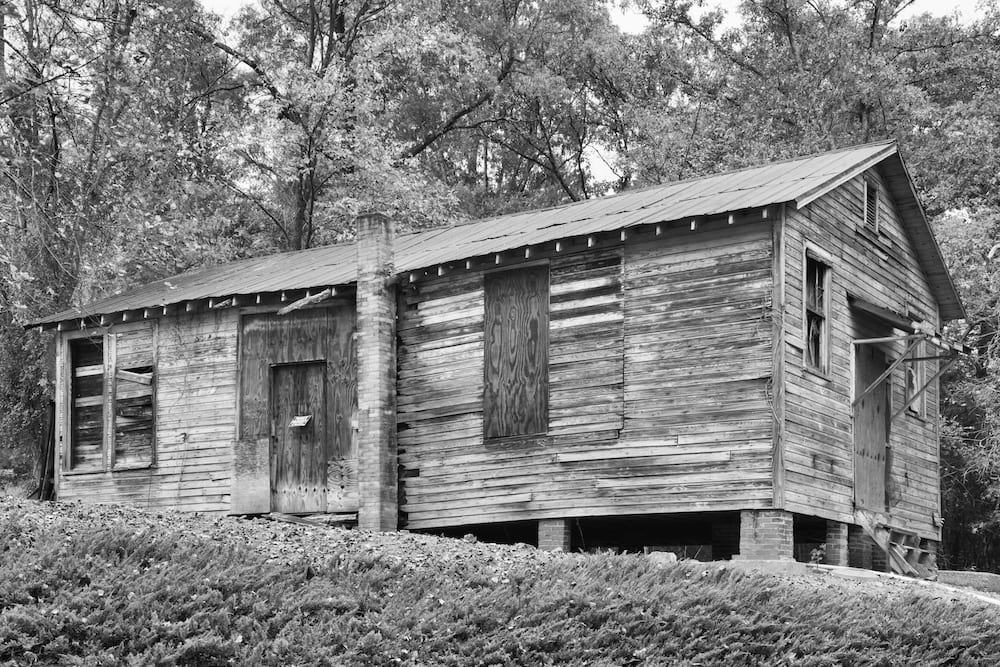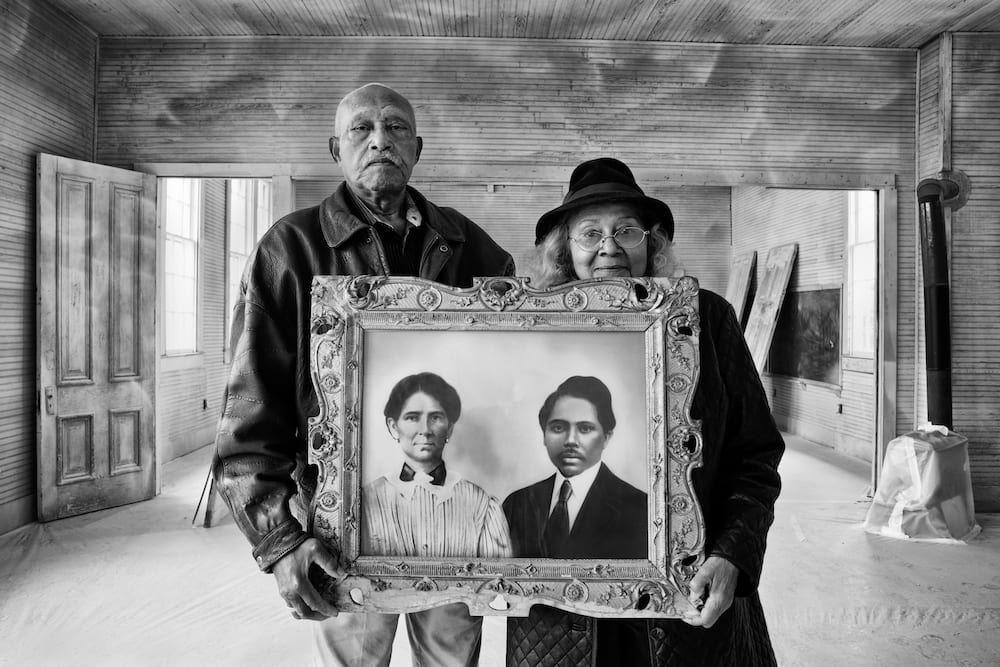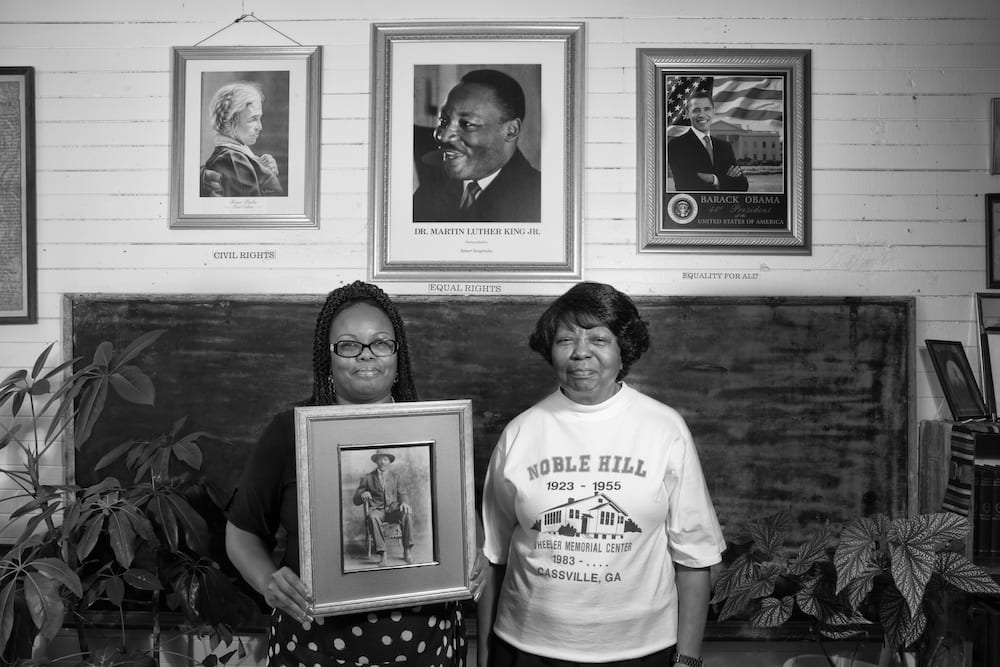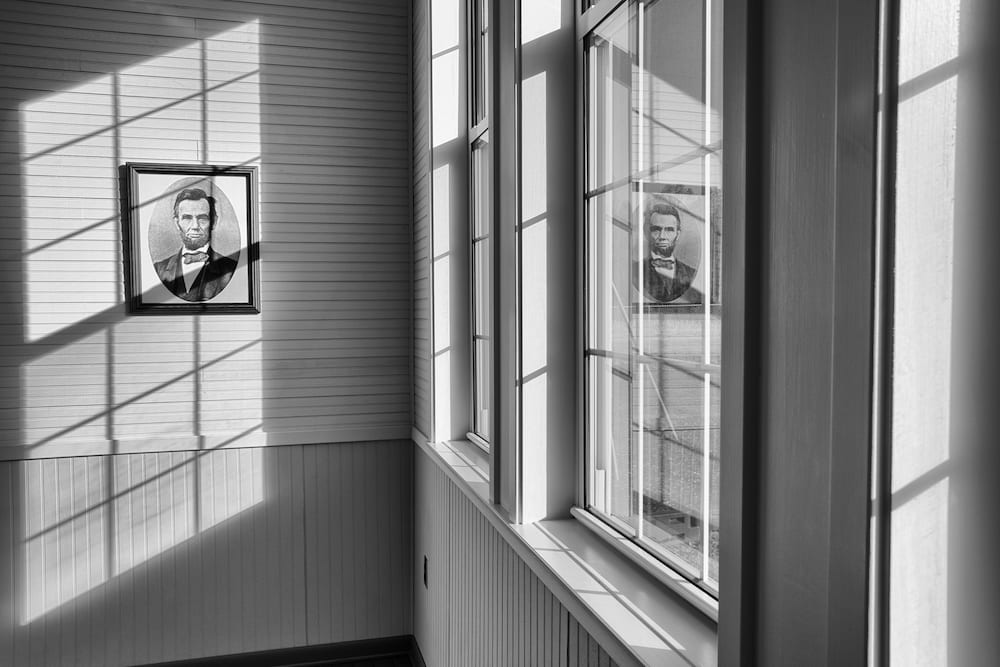Andrew Feiler │ Gene Downs interviews the author of A Better Life for Their Children: Julius Rosenwald, Booker T. Washington, and the 4,978 Schools that Changed America
In his new book (available from University of Georgia Press), Atlanta photographer and writer Andrew Feiler captures the story of the unlikely partnership between Booker T. Washington and Julius Rosenwald. Rosenwald was a Jewish-German immigrant who had risen to the leadership of Sears, Roebuck, and Co., the nation’s largest retailer. With the support of local communities and school districts, the two men collaborated on a program to construct nearly 5,000 schools for Black students across the South from the 1910s into the 1930s.
Gene Downs: How did you first hear about the Rosenwald Schools?
Andrew Feiler: I first heard of them from a preservationist named Jeanne Cyriaque, who served as African American Program Coordinator for the Historic Preservation Division of the Georgia Department of Natural Resources. I am a fifth-generation Jewish Georgian and have been a progressive activist my entire life. The pillars of this story are the pillars of my life. How could I have never heard the story?
I came home and Googled “Rosenwald Schools,” and I found some books but no photographic accounts of the subject. My first book (Without Regard to Sex, Race, or Color: The Past, Present, and Future of One Historically Black College) was about to be published, and I decided this was going to be my next project. For the next three-and-a-half years, I drove 25,000 miles across all 15 program states. Only about 500 of the Rosenwald Schools survive, and I shot 105 of them.
GD: Why is this story relevant today?
AF: The Rosenwald School project profoundly reshaped the nation and the African-American experience. Yet the program remains “hidden history,” and few people understand its sweep and scope.
Two economists at the Federal Reserve Bank of Chicago have conducted studies about the Rosenwald Schools, and their data shows that, prior to WWI, there was a large educational gap between white and Black students in the South. That gap closed precipitously between WWI and WWII, and the single greatest driver of that achievement was the Rosenwald Schools. Many of the leaders and foot soldiers of the Civil Rights movement came through Rosenwald Schools. Medgar Evers, Maya Angelou, John Lewis―they all went to Rosenwald Schools.
And the central message of this program is the reason people are marching in the streets for social justice today: individual actions matter, they make a difference, they can change the world.
GD: What logistical challenges did you encounter with the project?
AF: The biggest logistical challenge was trying to find the surviving schools and the people connected to them. In some places all I had was the name of the county where a school existed. I started to put together the puzzle pieces that I wanted to assemble. Then, I’d go to Google Earth and Google Street View, though some places were too rural for me to find on Street View. That helped me figure out if a school added to my visual narrative.
GD: How did you go about identifying a visual narrative?
AF: At the beginning of the process, I knew this was an amazing story. But it was not clear how I could tell it visually. I started with the exteriors of the structures, where the core narrative is architectural. As I started going into the schools, I developed the adaptive re-use narrative of how these buildings are used today. Of the 105 schools in the book, only five are still in use for educational purposes. Other have been turned into community centers, church halls, museums, private homes. One is a city hall.
GD: What were some of your key artistic choices?
AF: Each school is listed in the book with its name, county and state. I also put the dates each school opened and closed, to recognize that implementation of school desegregation, under the Brown v. Board of Education of Topeka Supreme Court decision in 1954, varied tremendously not just by state but also by school jurisdiction. Many of these schools were active deep into the 1960s.
Another significant artistic choice was in how I structured my portraits. I set each of my subjects in a place or space or with objects that complement their individual stories. I also never told anybody what to wear, and I did not tell them what expression to put on their face. That was my way of giving them the opportunity to express agency in how they approached the camera, and it brings their authenticity and dignity into the images.
The emotional heart of this story is the people. Not only are there former students and teachers, but there are also former students who became teachers and then became the people in the community who are leading preservation efforts. They are the keepers of the flame of history and memory.
GD: Why did you choose black-and-white imagery?
AF: All of the images are horizonal and black-and-white. The Rosenwald Schools began with a pilot program of six schools all near Tuskegee, Alabama, where Booker T. Washington could keep eye on the schools. Washington had horizontal, black-and-white photographs made of the teachers and students standing proudly in front of their schools, and he sent these images to Julius Rosenwald. Rosenwald was so moved by the images that he said he would go ahead and start expanding the program.
My decision to use horizontal black-and-white images is, therefore, an homage to the active role photography played in the program’s success; it is the visual language of those early images that became an integral part of the schools’ narrative.
GD: What does the future hold for the schools?
AF: The book doesn’t shy away from illustrating the challenging condition of some of the schools that are not yet restored. Several schools I visited were piles of rubble so recently collapsed that one was surrounded by emergency fencing and one by yellow caution tape. Therein lies the plea for preservation. These are perishable resources, and they are hugely important. I hope the book brings a sense of urgency around the need to preserve our historic resources.
GD: What can you reveal about plans for a traveling exhibition of the images?
AF: On May 22, an exhibition of selected prints from the book will open at the National Center for Civil and Human Rights, in Atlanta, and remain open until Dec. 10. From there, it will travel to the National Civil Rights Museum at the Lorraine Motel, in Memphis; the Tennessee State Museum, in Nashville; the Museum of the Southern Jewish Experience, in New Orleans; and the Virginia Museum of History & Culture, in Richmond. I’m in active discussions with another half-dozen museums around the country to host the exhibition.
GD: Are you already at work on your next project?
AF: I’m actively thinking about what I want to do next. I have ideas every week, but most of them don’t survive 24 hours of scrutiny and most of the rest don’t survive 72 hours of scrutiny. I have a few that I continue to kick around after three months of scrutiny, in some cases more than a year of scrutiny. What I’m doing right now is some of the reading associated with those narrative threads. I hope to zero on a decision and start shooting the next project in the fall.
BIO:
Andrew Feiler is a fifth generation Georgian. Having grown up Jewish in Savannah, he has been shaped by the rich complexities of the American South. Andrew has long been active in civic life. He has helped create over a dozen community initiatives, serves on multiple not-for-profit boards, and is an active advisor to numerous elected officials and political candidates. His art is an extension of his civic values.
Andrew’s newest book of photography, A Better Life for Their Children: Julius Rosenwald, Booker T. Washington, and the 4,978 Schools that Changed America, has just been published by the University of Georgia Press. This work is the first comprehensive photodocumentary of the program created by Tuskegee Institute principal Booker T. Washington and Sears, Roebuck & Company president Julius Rosenwald. From 1912 to 1937, this collaboration built 4,978 schools for African American children across 15 southern and border states and transformed America.
Andrew’s Rosenwald school images have received a number of early honors. Photolucida named them a 2020 Top 50 portfolio and Photoville selected them for The Fence, an outdoor exhibition displayed internationally in eleven cities. They were also part of the Currents 2020 exhibition at the Ogden Museum of Southern Art in New Orleans. The solo exhibition of this work will premiere at the National Center for Civil and Human Rights in Atlanta in May 2021.
Andrew’s earlier book, Without Regard to Sex, Race, or Color, was also published by the University of Georgia Press. Focused on the largely abandoned campus of an historically black college, this body of artistic documentary photography offers a new way into the debate raging in our society about the essential role education has played as the foundation of the American Dream.
Andrew’s photographs have been featured in Smithsonian, Slate, Lenscratch, Oxford American, The Bitter Southerner, Aint-Bad, numerous newspapers, and on NPR. His work has been displayed in galleries and museums including solo exhibitions at the National Civil Rights Museum at the Lorraine Motel in Memphis, Octagon Museum (American Institute of Architects) in Washington, D.C., International Civil Rights Center & Museum in Greensboro, NC, Ralph Mark Gilbert Civil Rights Museum in Savannah, Burrison Gallery of the University of Pennsylvania in Philadelphia, Southeast Center for Photography in Greenville, SC, and City Gallery in Charleston, SC. His work is in a number of public and private collections including that of Atlanta University Center and Emory University.
Andrew earned his bachelor’s in economics from The Wharton School of the University of Pennsylvania. He earned a master’s in modern history from Oxford University and a master’s in business administration from Stanford University. Andrew’s work can be seen at andrewfeiler.com.
A Better Life for Their Children:
Julius Rosenwald, Booker T. Washington,
and the 4,978 Schools that Changed America
Photographs and Stories by Andrew Feiler
With a foreword by Congressman John Lewis
Essays by Jeanne Cyriaque and Brent Leggs
University of Georgia Press
136 pages, 10×10″
34.95
A Capella Books > https://bit.ly/3r0OW7f
Amazon > https://amzn.to/2MAgkdg
For Signed or Personalized Copies > https://bit.ly/3bM5Dg1


